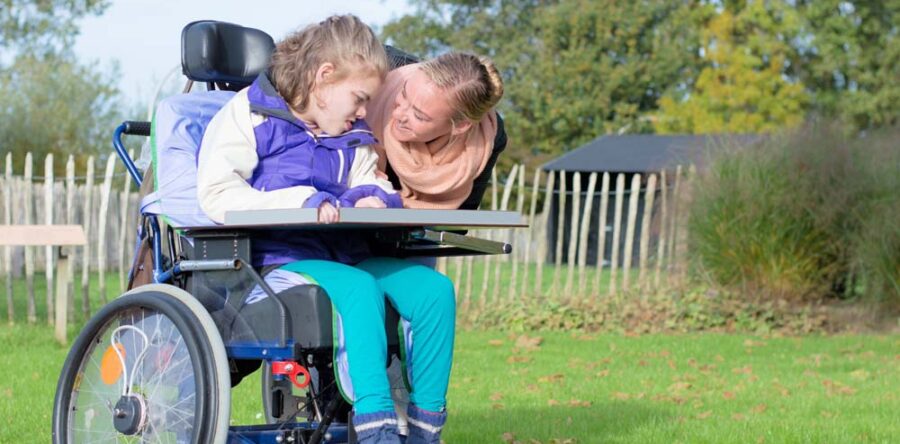Children with communication disabilities use a variety of methods to share their thoughts. Some children communicate verbally or use a communication device. Others communicate by pointing to letters or using basic sign language, facial expressions, vocalizations, or gestures.
It may seem like you are speaking a slightly different language with each child, and in some cases, you may need to find someone who speaks their particular language. If so, seek neutral parties who know how to communicate with the child, such as a teacher, day care provider, or speech therapist. You may also request an interpreter for children with speech disabilities through some sign language interpreter services. Other tips follow.
Build rapport
- Push past your fears that you are going to do it wrong. The child will respond better to you because you made the effort.
- Sit at the child’s height. Talk directly to the child, not through an adult.
- Use neutral and open body language and facial expressions. Speak in your normal tone and volume.
- Slow down, listen, and pay attention. Everybody wants to be heard.
- The calmer and less stressful the setting, the more the child will be able to communicate.
Learn about the child’s communication style
- Find out as quickly as you can how the child’s disability affects their ability to understand what is being said, produce speech, etc.
- Take time to become familiar with the child’s speech patterns.
- If the child uses a communication device, find out if it has the language or pictures necessary to disclose abuse. Ask the speech therapist or nonabusive family member to program in words the child might need, such as body parts, and words for abuse, such as kicking, hitting, etc.
Be honest and show respect
- Don’t pretend to understand if you do not. The child will know, and it will erode trust.
- Unless the child requires an interpreter, do not let someone speak for them.
- Wait after asking a question. It may take the child some time to reply, whether using a device or speech. After they finish talking, wait two seconds before you start talking, in case they were not done.
- Explain what you are going to do, step by step. One, we’re going to talk here. Two, then …
- Speak slowly to pace the conversation. If you think you understood, but are not 100% sure, ask: Are you saying this, did you say, did I understand that correctly?
- Never complete their sentence, interrupt, assume incompetence, or take access to communication away, especially a communication device.
Be flexible in your approach
- Use open-ended questions whenever possible, even if it takes longer than a usual conversation. If the child is only able to answer yes or no, have these tools on hand:
- A sign that says yes and another sign that says no. For children who do not read, use a stop sign or a red light (no) and green lights (yes) sign.
- Notepad
- Computer
- A basic picture board, or letters or numbers
- If the child cannot point to a yes or no, ask them to blink their eyes, tap a pencil, thumbs up, or nod their head if the answer is yes.
- If you are having trouble understanding, try these tips:
- It can take a while for you to understand the child. Listen to the whole sentence or phrase. Let the context help you. Become comfortable with some wait time.
- Repeat what you thought the child said and ask them if it is correct.
- Ask them to rephrase what they said, with different words.
- Say what you understood and ask the child to try to help you understand the rest.
- If the child can spell, ask them to spell it for you, or write it down.






